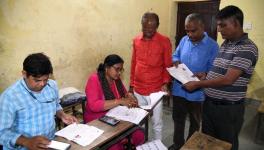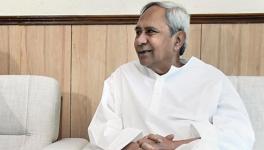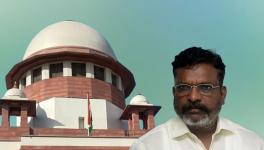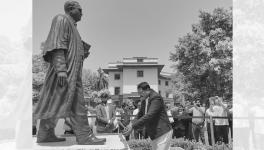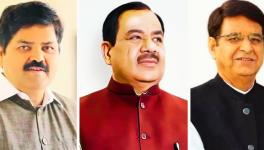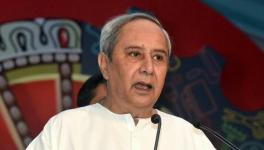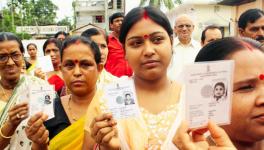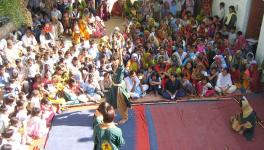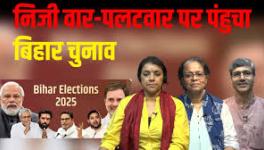On Caste and Identity Politics in Gujarat Elections
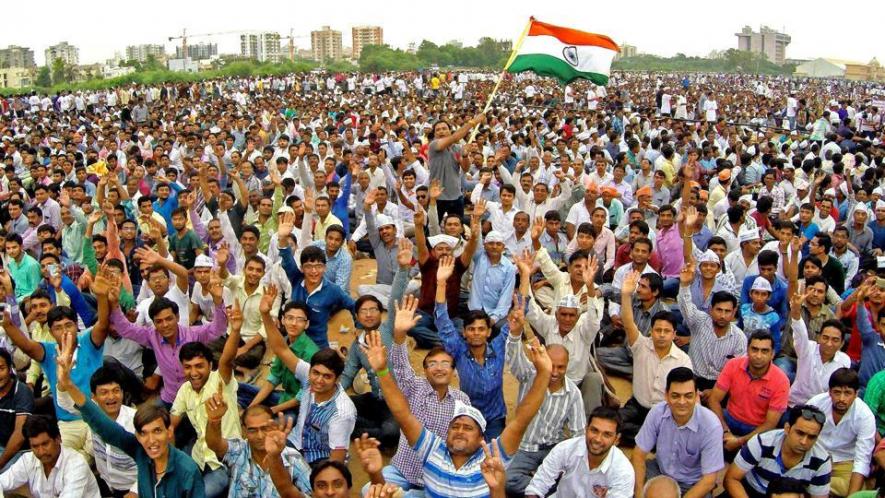
Image Courtesy: Hindustan Times
The dust has settled on the Gujarat elections. The BJP has claimed that it has fought twenty two years anti-incumbency and won the elections because of its ‘politics of vikas’ versus the opposition’s ‘casteist politics’. In a post-election interview, the BJP president Amit Shah claimed that his 150+ mission had failed because of the “dirty and low level casteist politics of the Congress and its allies”. In doing so, Shah dismissed all the agitations that Gujarat has been facing for the last few years as “dirty low level politics”. But the advocates of this line should be aware of its skewed logic. As analysis after analysis of the Gujarat elections showed, the BJP suffered some major setbacks in rural Gujarat; it also assumed that because of the work of the RSS amongst adivasis, the party swept the seats reserved for scheduled tribes. In fact one pre-election assessment even argued that the ‘dalits and adivasis’ would rescue and bolster the chances of the ruling dispensation. To this end, the BJP had shift its election discourse from questions of discrimination and rights to the questions of ‘patriotism’ and ‘Gujarati nationalism’, even alleging that the opposition was insulting the lower castes and the development that they had experienced. However, these pronouncements and stances have only a hegemonic value as they ignore the complex ways in which the dalits and adivasis exercise their choices. This is largely because dalits and adivasis are not a homogeneous ‘votebank’ as they have been treated in election analysis.
The elections of 2017 were held in the context of many important struggles of the working classes in the state. These struggles also adopted aggressive identity politics and mobilised particular social groups in order to press for greater share in employment etc. The abysmal record of the Gujarat Model in providing work and livelihood to all became the rallying point for many sections of the rural society. Seen in this light, the urban rural divide (as pointed out by most post poll analysis) in the voting pattern is not surprising in overall terms. Seen in this context the analysis of constituency wise voting patterns shows that diverse trends in SC and ST constituencies are also guided by this overall trend.
As per the election website of the Commission, there are 13 SC and 27 ST reserved constituencies in Gujarat. Out of these the BJP won seven seats in the SC reserved constituencies, most of which most were urban constituencies like Asarwa (a colony in Ahmadabad city), Vadodara city, Gandhidham (in Kachch) which is a business centre. Six seats were won by Congress and the Congress supported independent, Jignesh Mevani. Most of the constituencies won by the Congress have a large rural population like Kalavad, Gadhada, Kodinar and others. Overall, there has been a change of elected party in four out of 13 seats with the Congress gaining three from the BJP. This change is reflected in the changes in the vote shares of the two main parties (including the votes of the independents supported by them. While the vote share of Congress increased from 40.43 per cent in 2012 to 46.45 in 2017; the BJP too increased its vote share, but only from 48.14 per cent in 2012 to 48.75 per cent in 2017. Most of this increase was not due to the replacement in seats, but the increased margins with which some of the candidates won the elections.
In the 27 ST constituencies, however, the trend has been little different as most of these constituencies are based in rural Gujarat. They also have a long association with the Sangh organisations, and one may also recall that many adivasis had even participated in the Gujarat riots of 2002. This phenomena trend of so-called unflinching support of the adivasis to the RSS did not yield results in the 2012 elections when Congress won 16 and the BJP 11 out of the 27 seats. This situation remained relatively the same in the 2017 elections when the BJP lost one seat and won a total of 10 seats reserved for the STs. The Congress won 17 seats with its allies the Bharatiya Tribal Party and one independent form Morva Hadaf who was earlier denied a seat by the Party, but who later joined the Congress after winning the elections. Thus in overall terms of the seats the 2017 did not appear to show any breakthrough for any of the major parties.
However, the vote shares of different parties tell almost an entirely different story. The vote share of the BJP went up from 40.97 per cent in 2012 to 46.59 per cent in 2017. In contrast the vote share of the Congress and its allies came down from 46.28 per cent in 2012 to 45.75 per cent in 2017. It is important to note that a large part of the increased vote share of the BJP can be attributed to the rise in the margins of victory especially in the Surat and Bardoli adivasi belts. This also shows a deepening of the influence of the BJP in some adivasi areas especially through the consistent work of the RSS. This has also led to reduced margins of victory for the Congress in many of the seats that they have retained and also wrested from the BJP.
In overall terms, the voting patterns in all the reserved constituencies displayed a trend that was quite contrary to the overall trend of the Gujarat elections. While the BJP increased its vote share in the state from about 48 per cent in 2012 to 49.1 percent in 2017, the Congress vote share went up from approximately 39 per cent in 2012 to 41.1 per cent in 2017. But in the reserved constituencies for SC and ST the BJP gained more than the Congress in terms of its vote share especially in the adivasi areas where it consolidated its influence in certain pockets. In effect the BJP increased its vote share from five adivasi constituencies in the areas bordering Madhya Pradesh and Maharashtra.
These diverse patterns of voting amongst adivasis and dalits clearly indicate the uneven impact of hegemonic Hindutva as well as politics of identity (especially amongst the protesting working classes). It shows that sweeping statements about ‘dalit’ and ‘adivasi’ vote banks obfuscate the reality. In fact the increase in the BJP’s vote share amongst adivasis and selected dalit constituency follows larger regional patterns in the state. These patterns also closely align themselves with issues of agrarian distress and loss of employment that have underlined the severe jolt to the BJP in the Gujarat elections. The preliminary analysis of the voting patterns in the reserved constituencies clearly indicates the limited impact of both communal and identity politics in the voting behaviour of the dalits and adivasis. Perhaps a class analysis of the voting patterns within the adivasi and dalit social groups may lead to a better understanding of the complexities of the changing social basis of different political formations.
Disclaimer: The views expressed here are the author's personal views, and do not necessarily represent the views of Newsclick.
Get the latest reports & analysis with people's perspective on Protests, movements & deep analytical videos, discussions of the current affairs in your Telegram app. Subscribe to NewsClick's Telegram channel & get Real-Time updates on stories, as they get published on our website.









